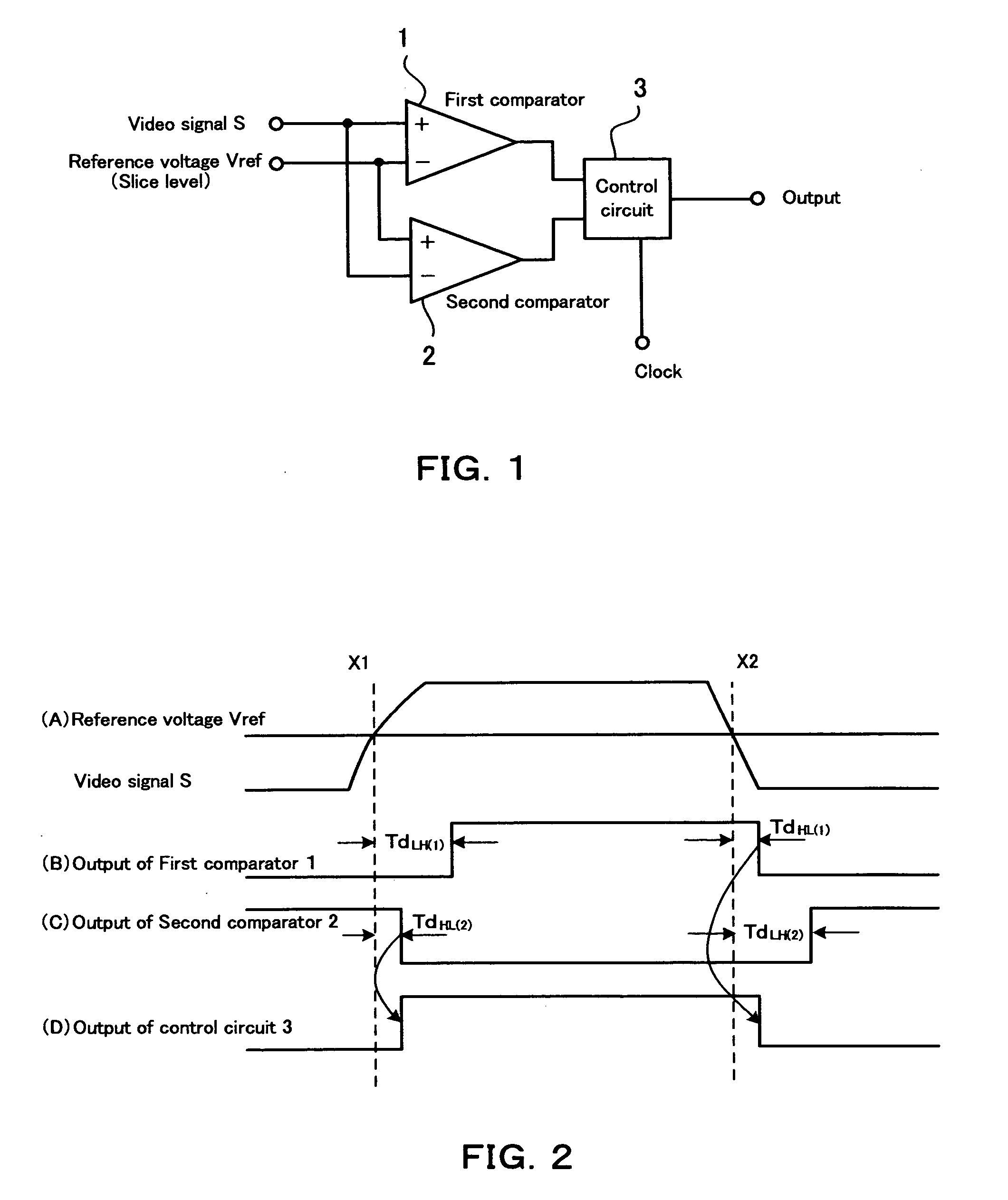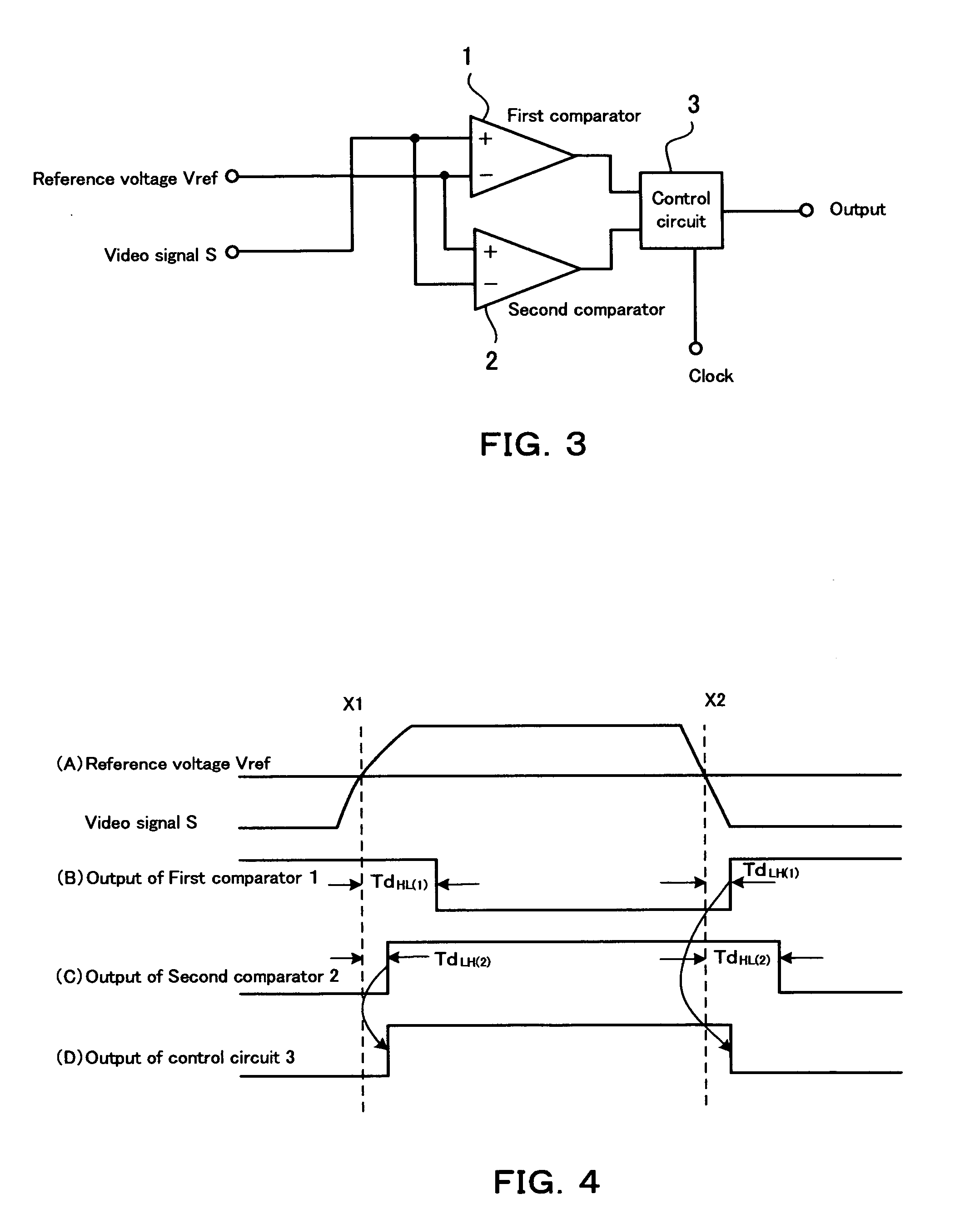Comparator system and method for comparing an input signal with a reference level using said system
a comparator system and reference level technology, applied in the field of comparator system, can solve problems such as the reliability of the comparator and the accuracy of output data
- Summary
- Abstract
- Description
- Claims
- Application Information
AI Technical Summary
Benefits of technology
Problems solved by technology
Method used
Image
Examples
first embodiment
[0043]FIG. 1 shows an example of a block diagram of a comparator system according to the invention. This comparator system includes a first comparator 1, a second comparator 2 and a control circuit 3.
[0044] The first comparator 1 is provided with a non-inverting input terminal, an inverting input terminal and an output terminal. In the first comparator 1, a video signal S is applied to the non-inverting input terminal and a reference voltage Vref as a slice level is applied to the inverting input terminal. This first comparator 1 outputs an H level signal when the level of the video signal S is higher than the level of the reference voltage Vref, and outputs an L level signal when the level of the video signal S is lower than the level of the reference voltage Vref.
[0045] The second comparator 2 is provided with a non-inverting input terminal, an inverting input terminal and an output terminal like the first comparator 1. The non-inverting input terminal of this second comparator 2...
second embodiment
[0060] As will be understood from the above explanation, in this second embodiment too, the output of the control circuit 3 always changes in accordance with the selected output of the first or second comparator 1 or 2 with the shorter time delay.
[0061]FIG. 5 shows an example of the control circuit 3 shown in FIG. 1 and FIG. 3. In FIG. 5 reference numeral “11” denotes a first D-type flip-flop which is configured to input the output of the first comparator 1 and then output a non-inverted output and an inverted output after the normalization with a clock signal. “12” denotes a second D-type flip-flop which is configured to input the output of the second comparator 2 and then output a non-inverted output and an inverted output after the normalization with the dock signal. “13” denotes a third D-type flip-flop which is configured to input an output of a NOR gate 17 and output a non-inverted output after the normalization with the dock signal. The output of this flip-flop 13 becomes an ...
PUM
 Login to View More
Login to View More Abstract
Description
Claims
Application Information
 Login to View More
Login to View More - R&D
- Intellectual Property
- Life Sciences
- Materials
- Tech Scout
- Unparalleled Data Quality
- Higher Quality Content
- 60% Fewer Hallucinations
Browse by: Latest US Patents, China's latest patents, Technical Efficacy Thesaurus, Application Domain, Technology Topic, Popular Technical Reports.
© 2025 PatSnap. All rights reserved.Legal|Privacy policy|Modern Slavery Act Transparency Statement|Sitemap|About US| Contact US: help@patsnap.com



